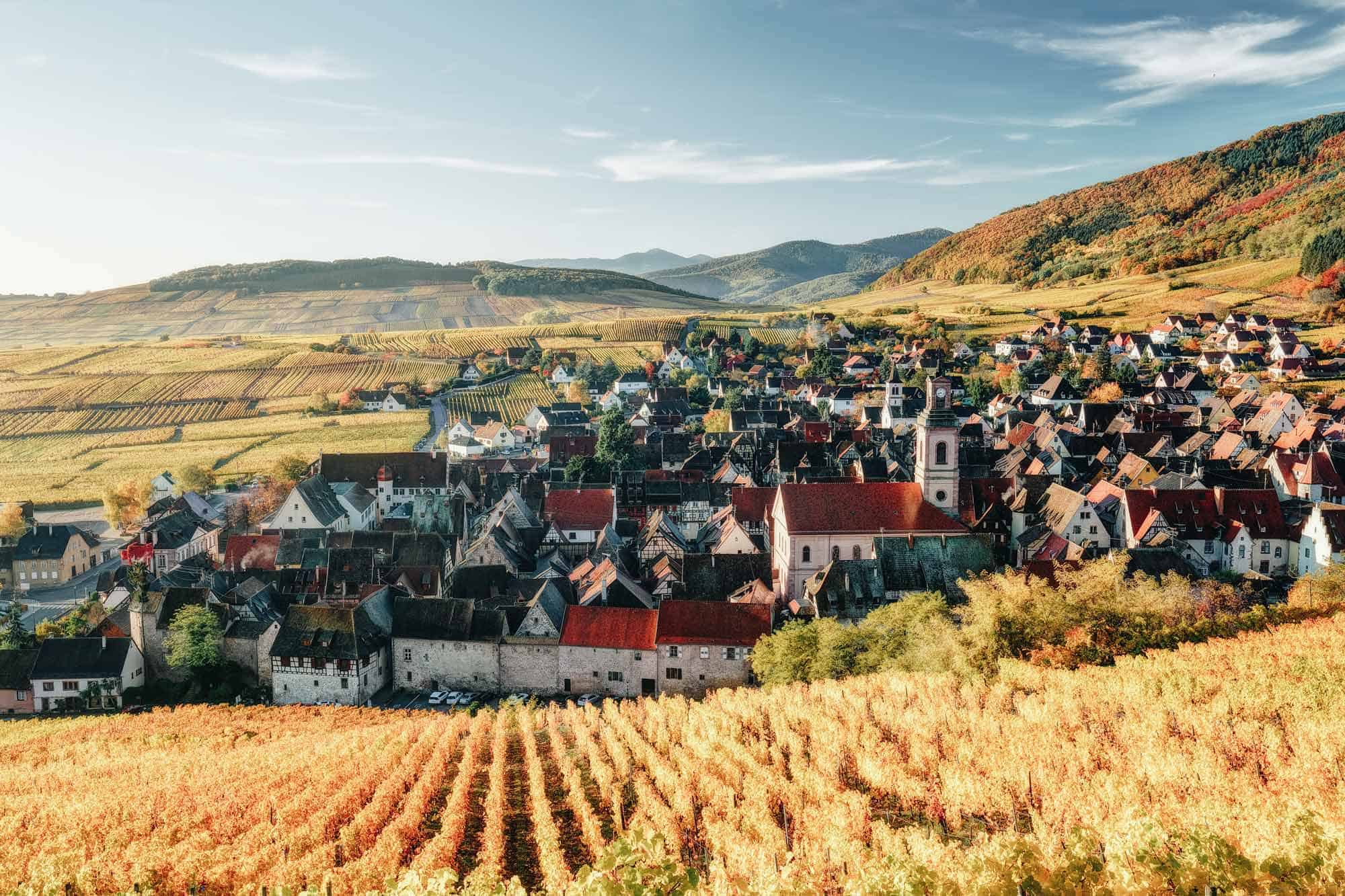Visit Alsace — Delight in Discovering the Medieval Town of Strasbourg
The region of Alsace has it all: cozy winstubs, the Alsatian wine route, picturesque cities and towns like Colmar and Mulhouse, architectural wonders for days. Yet amid the variety of monuments, iconic wines, and charming towns mixing French and German culture, Strasbourg stands out as the stop you should make if you can only make one.

Strasbourg is located just 2.5 miles from the French-German border and the confluence of these cultures has influenced its history, architecture, food, festivals, and more. Strasbourg is truly unique, and travelers flock to this city for its high concentration of medieval architecture and beloved half-timbered houses.
From historic neighborhoods to ancient buildings, Strasbourg has it all. Read on to check out some of our favorite highlights in Alsace’s largest city. And don’t forget to check out “Visit Colmar — The Capital of Alsatian Wine” to learn about another nearby treasure.
The towering Cathédrale Notre-Dame de Strasbourg
Known colloquially as the Strasbourg Cathedral, Cathédrale Notre-Dame de Strasbourg has long been a part of the city — since its erection in 1015. What you’ll first notice about the Strasbourg Cathedral is its red color and immensity. While it’s currently the sixth tallest church in the world, the Strasbourg Cathedral historically held the title of the world’s tallest building — a distinction it kept for almost 230 years. The first iteration of the church was in the Romanesque architectural style, but when much of it was destroyed in a fire, the reconstruction took on the emerging Gothic style. During the reconstruction, it was also decided to procure stone from a unique source: the Vosges mountains whose rockface is a rich red.
Touring the Strasbourg Cathedral is a journey through time, witnessing the convergence of historical periods and aesthetics. Among the church’s highlights is the beautiful astronomical clock featuring a mechanical model of the solar system, called an orrery. Don’t skip this architectural monument that's been called a “sublimely towering, wide-spreading tree of God,” and a “gigantic and delicate marvel” by Goethe and Victor Hugo.
Quaint winstubs serving up local wine
Winstubs are an Alsatian staple. They are charming little “wine rooms,” serving up local wine with small plates of hearty Alsatian fare. Think rustic pub meets homey French kitchen. You can find two of our favorite winstubs in Strasbourg: Chez Yvonne and Au Pont Corbeau. Chez Yvonne is the most popular winstub in the city and was made so by Yvonne Haller who took over from a previous owner in the 1950s. The current owners of Chez Yvonne (since the early 2000s) have worked to keep the old charm of the winstub while implementing more gastronomic variety. Now the menu features contemporary and inventive dishes with its traditional Alsatian baeckeoffe, flammekueche and choucroute garnie. We also love Au Pont Corbeau, a father-daughter owned winstub oozing with charm. Gingham tablecloths, wood-paneled walls, windows made from wine bottles — this is definitely a spot for a photo or two. While you’re at Au Pont Corbeau, try a few of the natural wines from Christophe’s collection of over 13,000 bottles and taste a few dishes from his daughter’s (and co-owner’s) menu of traditional and contemporary Alsatian meals.
Elegant Palais Rohan
Also known as the Rohan Palace, the Palais Rohan was the historic home of four generations of cardinals that were all from the House of Rohan family. The building is a gorgeous masterpiece, designed by Robert de Cotte and built in the 1730s. It’s often cited as a perfect example of French Baroque architecture, and the interior apartments for the cardinals were greatly influenced by the luxury of Versailles. Today, the Palais Rohan is home to three museums: the Museum of Decorative Arts, the Museum of Fine Arts, and the Archaeological Museum.
The multinational Jardin des Deux Rives
The aptly-named Jardin des Deux Rives, or “garden of the two banks,” spreads across both sides of the Rhine River, into French Strasbourg and German Kehl. This multinational garden was created in 2004 and emcompasses 60 hectares of land. Locals and visitors especially love the suspension bridge linking the two banks. This bridge was designed by Marc Mimram and all traffic is restricted to pedestrians and cyclists. Enjoy a walk along this new architectural monument in Strasbourg, smell the flowers, stroll the walking paths, and relax on the grassy lawns overlooking Strasbourg’s more ancient buildings.
Canals of La Petite France
La Petite France is a historic quarter found on the UNESCO World Heritage Site of Strasbourg’s center island, the Grande Île. The Ill River and Canal du Faux-Rempart separate the Grande Île, meaning “Large Island,” from the rest of Strasbourg. As such, the history of the charming La Petite France quarter was defined by access to water. During the Middle Ages, this quarter was home to tanners, millers, and fisherman who used the canals for easy export of goods. In fact, La Petite France is still often referred to as Quartier des Tanneurs (or Gerberviertel in German), meaning “The Tanner’s Quarter.” Today, traveler’s love the canals, footbridges, and half-timbered houses that follow the water. These colorful, chalet-like houses are seeing new lives as boutiques and new restaurants. Make sure to visit the famous Maison des Tanneurs (Tanner’s house), the picturesque street of Rue du Bain-aux-Plantes, and the series of three linked bridges called Les Ponts Couverts. None will disappoint.
La Place Gutenberg
It might surprise you that a square in France’s Strasbourg is dedicated to a German printer and publisher, yet there’s a great reason for La Place Gutenberg. Also called the Gutenberg Square, La Place Gutenberg was named for Johannes Gutenberg because he invented the idea of mechanical movable type printing while he was in Strasbourg. Historically, Strasbourg was a printing center and the city’s success is due in large part to this industry. The square features a statue of Gutenberg, the Renaissance-era Chamber of Commerce building, and an ancient Roman road, called Rue des Hallebardes.



